Lo que necesita saber sobre las baterías 18650 y 14500
Las baterías son componentes esenciales de los dispositivos electrónicos modernos, desde teléfonos inteligentes y portátiles hasta linternas y vehículos eléctricos. Entre los tipos de baterías recargables más populares se encuentran las baterías 18650 y 14500. Estas baterías de iones de litio (Li-ion) son muy apreciadas por su tamaño compacto, durabilidad y eficiencia, lo que las hace ideales para diversas aplicaciones. En esta guía completa, cubriremos todo lo que necesita saber sobre las baterías 18650 y 14500 , incluyendo sus diferencias, usos y consejos de seguridad.
- ¿Qué son las baterías 18650 y 14500?
- Diferencias clave entre las baterías 18650 y 14500
- ¿Por qué las baterías 18650 y 14500 son tan populares?
- Cómo elegir entre baterías 18650 y 14500
- Cómo utilizar baterías 18650 y 14500 de forma segura
- El impacto ambiental de las baterías 18650 y 14500
¿Qué son las baterías 18650 y 14500?
Para comprender la importancia de las baterías 18650 y 14500 , es importante definir primero qué son y cómo funcionan. Ambos tipos de baterías son celdas de iones de litio, una tecnología que se ha vuelto omnipresente debido a su alta densidad energética, su capacidad de recarga y su larga vida útil.
·
Batería 18650 : La batería 18650 es una celda cilíndrica de iones de litio de 18 mm de diámetro y 65 mm de longitud. Es uno de los tipos de batería más utilizados en electrónica de consumo. Los símbolos "18" y "65" se refieren al diámetro (18 mm) y la longitud (65 mm) de la batería, mientras que "0" indica su forma cilíndrica.
·
·
Batería 14500 : Similar en construcción a la 18650 , la batería 14500 es más pequeña, con 14 mm de diámetro y 50 mm de longitud. Este tamaño reducido la convierte en la opción ideal para dispositivos compactos que requieren una fuente de alimentación recargable pero no tienen espacio para la 18650 de mayor capacidad.
·
A pesar de sus diferencias de tamaño, las baterías 18650 y 14500 funcionan de forma similar, utilizando la química de iones de litio para almacenar y liberar energía. Ambas ofrecen ciclos de carga impresionantes, lo que significa que pueden recargarse muchas veces antes de que su capacidad comience a disminuir.
>>Vea también ¿Cuánto tiempo alimentará un refrigerador una batería de litio de 100 Ah?
Diferencias clave entre las baterías 18650 y 14500
Si bien las baterías 18650 y 14500 comparten muchas similitudes, presentan varias diferencias clave que las hacen adecuadas para diferentes aplicaciones. Comprender estas diferencias es crucial para seleccionar la batería adecuada para su dispositivo.
1. Tamaño y capacidad
La diferencia más evidente entre las baterías 18650 y 14500 es su tamaño. La batería 18650 es más grande, lo que le permite almacenar más energía. Una batería 18650 típica tiene una capacidad de entre 2200 mAh y 3500 mAh, mientras que una batería 14500 generalmente ofrece una capacidad de entre 600 mAh y 1000 mAh. Esto significa que la 18650 puede alimentar dispositivos durante más tiempo antes de necesitar una recarga.
- Batería 18650 : Suele almacenar más energía gracias a su mayor tamaño. Ideal para aplicaciones de alta potencia.
- Batería 14500 : compacta y liviana, lo que la hace adecuada para dispositivos más pequeños y de bajo consumo.
2. Potencia de salida
La potencia de salida de una batería depende de su capacidad y voltaje. Si bien tanto las baterías 18650 como las 14500 funcionan a un voltaje nominal de 3,7 V, la 18650 puede proporcionar más potencia gracias a su mayor capacidad. Esto la hace más adecuada para dispositivos que requieren mayor corriente, como herramientas eléctricas, cigarrillos electrónicos y vehículos eléctricos.
3. Aplicaciones
Dadas las diferencias de tamaño y potencia, las baterías 18650 y 14500 se utilizan en diferentes tipos de dispositivos:
·
Baterías 18650 : Se encuentran generalmente en dispositivos de alto consumo, como laptops, baterías externas, vehículos eléctricos y linternas de alto rendimiento. También se utilizan en paquetes de baterías que alimentan dispositivos con mayor demanda de energía.
·
·
Baterías 14500 : Su tamaño reducido la hace ideal para dispositivos compactos como linternas, cámaras, afeitadoras eléctricas y otros dispositivos electrónicos portátiles. Estas baterías se suelen elegir cuando el espacio es limitado.
·
¿Por qué las baterías 18650 y 14500 son tan populares?
La popularidad de las baterías 18650 y 14500 se debe a su excelente equilibrio entre rendimiento, densidad energética y capacidad de recarga. Se utilizan ampliamente tanto en electrónica de consumo como en aplicaciones industriales.
1. Alta densidad energética
Una de las principales razones por las que las baterías 18650 y 14500 son tan populares es su alta densidad energética. Las baterías de iones de litio, en general, ofrecen una densidad energética mucho mayor en comparación con tecnologías de baterías más antiguas, como las de níquel-cadmio (NiCd) o níquel-hidruro metálico (NiMH). Esto significa que las baterías 18650 y 14500 pueden almacenar más energía en un espacio más pequeño, lo que se traduce en una mayor autonomía para sus dispositivos.
2. Recargabilidad
A diferencia de las pilas alcalinas desechables, tanto las 18650 como las 14500 son recargables, lo que las convierte en una opción más económica y ecológica. A lo largo de su vida útil, pueden recargarse cientos de veces, lo que reduce los residuos y proporciona un ahorro a largo plazo.
3. Versatilidad
Tanto las baterías 18650 como las 14500 son versátiles y se pueden usar en una amplia gama de aplicaciones. Desde linternas hasta vehículos eléctricos, estas baterías se utilizan en todo tipo de dispositivos, desde pequeños dispositivos hasta grandes sistemas de energía. La posibilidad de ajustar el número de celdas de un paquete de baterías permite soluciones altamente personalizables.
Cómo elegir entre baterías 18650 y 14500
Elegir la batería adecuada depende en gran medida del tamaño y los requisitos de energía de su dispositivo. Aquí hay algunos factores a considerar al elegir entre baterías 18650 y 14500 :
1. Requisitos de energía
Considere la demanda de energía de su dispositivo. Si alimenta un dispositivo de alto consumo, como un vehículo eléctrico o una linterna de alta potencia, la batería 18650 es la mejor opción debido a su mayor capacidad y potencia de salida. Si alimenta un dispositivo más pequeño, como una linterna compacta o una radio portátil, la batería 14500 debería ser suficiente.
2. Restricciones de tamaño
Si su dispositivo es compacto y no tiene espacio para una batería más grande, la 14500 es la mejor opción. Dispositivos como linternas pequeñas, juguetes y dispositivos portátiles suelen usar baterías 14500 por su tamaño compacto y peso ligero.
3. Duración de la batería
Dado que la batería 18650 tiene mayor capacidad, puede durar más entre cargas, lo que la convierte en una mejor opción para dispositivos que requieren un uso prolongado. Si prioriza una mayor duración de la batería, la 18650 es la mejor opción. Sin embargo, si solo necesita cargas cortas, la 14500 será suficiente.
Cómo utilizar baterías 18650 y 14500 de forma segura
Tanto las baterías 18650 como las 14500 son seguras si se usan correctamente, pero requieren cierto cuidado. Aquí tienes algunos consejos de seguridad para que aproveches al máximo tus baterías y evites accidentes:
1. Utilice el cargador adecuado
Utilice siempre un cargador diseñado específicamente para baterías 18650 y 14500. Usar un cargador incompatible puede provocar sobrecarga o sobrecalentamiento, lo que puede dañar la batería o provocar su fallo.
2. No cobres de más
Sobrecargar una batería puede reducir significativamente su vida útil y provocar sobrecalentamiento. Desconecte siempre el cargador una vez que la batería esté completamente cargada. Muchos cargadores modernos tienen una función de apagado automático que evita la sobrecarga.
3. Evite la descarga profunda
También es importante no dejar que la batería se descargue por completo. Esto puede provocar una bajada excesiva del voltaje, lo que podría dañarla. Intenta recargar las baterías 18650 y 14500 cuando alcancen aproximadamente el 20-30 % de carga.
4. Almacenamiento adecuado
Cuando no las use, guarde las baterías 18650 y 14500 en un lugar fresco y seco. Manténgalas alejadas de fuentes de calor directo, ya que el calor excesivo puede degradarlas. También es importante evitar cortocircuitos guardándolas en un estuche que evite que los terminales toquen cualquier material conductor.
>>Vea también Cómo entender las diferencias entre las baterías de los carritos de golf y las baterías de los automóviles comunes
El impacto ambiental de las baterías 18650 y 14500
Aunque las baterías 18650 y 14500 son más ecológicas que las desechables, siguen representando un riesgo ambiental si no se desechan correctamente. Las baterías de iones de litio contienen sustancias químicas que pueden contaminar el medio ambiente si se desechan de forma inadecuada.
1. Opciones de reciclaje
Afortunadamente, existen muchos programas de reciclaje que aceptan baterías 18650 y 14500. Muchas tiendas de electrónica y centros de reciclaje las aceptan, por lo que es importante asegurarse de desecharlas de forma responsable.
2. Reducción de residuos
Una de las principales ventajas de las baterías recargables es que reducen los residuos con el tiempo. Al usar baterías 18650 y 14500 , se evita la necesidad de baterías desechables, que suelen desecharse después de un solo uso. Esto contribuye a reducir la cantidad de residuos tóxicos en los vertederos.
Las baterías 18650 y 14500 son opciones excepcionales para alimentar dispositivos electrónicos. Si bien comparten similitudes en rendimiento y tecnología, difieren significativamente en tamaño, capacidad y potencia de salida. La batería 18650 es más adecuada para dispositivos más grandes y de alto consumo, mientras que la 14500 es perfecta para dispositivos compactos y de bajo consumo.
Al elegir entre ambos, tenga en cuenta las limitaciones de tamaño y los requisitos de energía de su dispositivo. Independientemente del tipo de batería que elija, siga siempre los protocolos de seguridad adecuados para garantizar su larga vida útil y la seguridad de sus dispositivos. Además, recuerde reciclar las baterías usadas para minimizar el impacto ambiental.
Al comprender las baterías 18650 y 14500 , sus aplicaciones y sus requisitos de cuidado, puede tomar decisiones informadas que
Te ayudará a aprovechar al máximo tus dispositivos y a proteger el medio ambiente. Ya seas un entusiasta de la electrónica, un profesional o simplemente alguien que busca soluciones de energía confiables, estas baterías son una excelente opción para diversos usos.

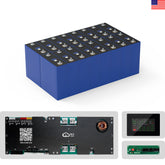

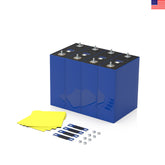
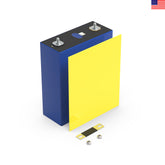
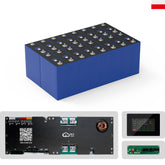

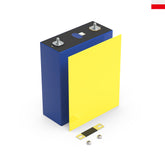

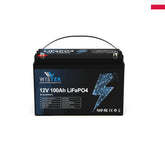
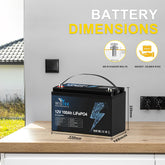
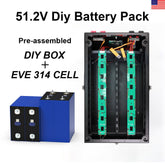

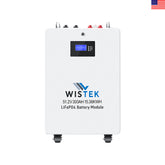
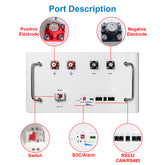
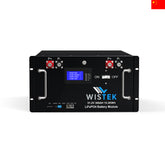
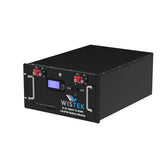


Leave a comment
All blog comments are checked prior to publishing